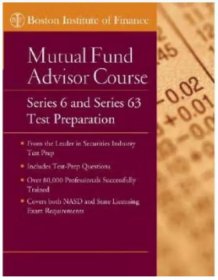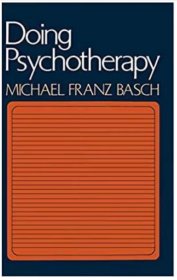
阿西莫夫基地系列 基地与帝国 新版 英文原版 Foundation and Empire
¥ 86 8.1折 ¥ 106 九五品
库存2件
广东广州
认证卖家担保交易快速发货售后保障
作者Isaac Asimov
出版社HPC
ISBN9780008117504
出版时间2016-10
印刷时间2016-10
印数1千册
装帧平装
开本32开
纸张轻型纸
页数240页
字数1千字
定价106元
上书时间2024-09-22
- 最新上架
商品详情
- 品相描述:九五品
- 商品描述
-
基本信息
Format:Paperback / softback 240 pages
Publisher:HPC
Imprint:HPC
ISBN:9780008117504
Published:6 Oct 2016
Classifications:Classic science fiction
Weight:170g
Dimensions:197 x 129 x 16 (mm)
基本信息仅供参考,具体以实物为准
书籍简介
荣获 "胡戈奖 "历史系列奖 基金会系列是艾萨克-阿西莫夫(Isaac Asimov)的经典代表作。哈里-塞尔顿(Hari Seldon)的两个基金会的故事以摇摇欲坠的银河帝国为背景展开,是非凡想象力的永恒见证,塑造了我们今天所知的科幻小说。在曾经强大的银河帝国陷入混乱的两个世纪中,基金会幸存了下来。
现在,随着帝国舰队向他们的星球 "终点站 "挺进,基金会正准备与帝国残余势力开战。哈里-塞尔顿预测到了这场战争;他甚至为这场战争准备了他的基金会。但他无法预见变种人骡子的诞生。
骡子拥有一种可以将可怕的对手变成忠实奴隶的力量,它对塞尔登的基金会构成了可怕的威胁。
WINNER OF THE HUGO AWARD FOR BEST ALL-TIME SERIES The Foundation series is Isaac Asimov’s iconic masterpiece. Unfolding against the backdrop of a crumbling Galactic Empire, the story of Hari Seldon’s two Foundations is a lasting testament to an extraordinary imagination, one that shaped science fiction as we know it today. The First Foundation survived two centuries of barbarism as the once-mighty Galactic Empire descended into chaos.
Now it mist prepare for war against the remnants of the Empire as the Imperial fleet advances on their planet, Terminus. Hari Seldon predicted this war; he even prepared his Foundation for it. But he couldn’t foresee the birth of the mutant Mule.
In possession of a power which reduces fearsome opposition to devoted slaves, the Mule poses a terrible threat to Seldon’s Foundation.
作者简介
艾萨克-阿西莫夫(/ˈaɪzᵻk ˈæzᵻmɒv/; born Isaak Yudovich Ozimov; circa January 2, 1920 - April 6, 1992),美国作家,波士顿大学生物化学教授,以科幻小说和科普读物著称。阿西莫夫多产,撰写或编辑了 500 多本书以及约 90,000 封信件和明信片。在杜威十进分类法的 10 个主要类别中,他的著作出版了 9 个类别。
阿西莫夫写的是硬科幻小说,他生前与罗伯特-A-海因莱因和阿瑟-C-克拉克一起被认为是 "三大 "科幻小说家之一。阿西莫夫著名的作品是 "基金会系列",其他主要系列包括 "银河帝国系列 "和 "机器人系列"。《银河帝国》系列小说与《基金会》系列一样,明确设定在同一虚构宇宙的早期历史中。后来,从《基金会的边缘》开始,他将这个遥远的未来与《机器人》和《太空人》故事联系起来,为他的故事创造了一个统一的 "未来历史",这与罗伯特-A-海因莱因开创的、科德温纳-史密斯和普尔-安德森之前创作的故事非常相似。他创作了数百部短篇小说,其中包括社会科幻小说《夜幕降临》,该小说于 1964 年被美国科幻小说作家协会评为史上短篇科幻小说。阿西莫夫用保罗-弗伦奇的笔名创作了 "幸运星 "系列少年科幻小说。
阿西莫夫还写过悬疑小说和奇幻小说,以及许多非虚构作品。他的大多数科普读物都以历史的方式解释科学概念,尽可能追溯到有关科学处于简单阶段的时期。他经常提供所提到的科学家的国籍、出生日期和死亡日期,以及专业术语的词源和发音指南。例如《科学指南》、三卷本《理解物理学》和《阿西莫夫科学与发现年表》,以及有关天文学、数学、历史、威廉-莎士比亚的著作和化学的作品。
阿西莫夫是门萨国际的长期成员和副主席,尽管他并不情愿;他形容该组织的一些成员 "以脑为荣,对自己的智商咄咄逼人"。他更喜欢担任美国人文主义协会主席。小行星 5020 阿西莫夫、火星上的一个陨石坑、布鲁克林的一所小学和一个文学奖都以他的名字命名。
Isaac Asimov (/ˈaɪzᵻk ˈæzᵻmɒv/; born Isaak Yudovich Ozimov; circa January 2, 1920 – April 6, 1992) was an American author and professor of biochemistry at Boston University, best known for his works of science fiction and for his popular science books. Asimov was prolific and wrote or edited more than 500 books and an estimated 90,000 letters and postcards. His books have been published in 9 of the 10 major categories of the Dewey Decimal Classification.
Asimov wrote hard science fiction and, along with Robert A. Heinlein and Arthur C. Clarke, he was considered one of the "Big Three" science fiction writers during his lifetime. Asimov's most famous work is the Foundation Series; his other major series are the Galactic Empire series and the Robot series. The Galactic Empire novels are explicitly set in earlier history of the same fictional universe as the Foundation series. Later, beginning with Foundation's Edge, he linked this distant future to the Robot and Spacer stories, creating a unified "future history" for his stories much like those pioneered by Robert A. Heinlein and previously produced by Cordwainer Smith and Poul Anderson. He wrote hundreds of short stories, including the social science fiction "Nightfall", which in 1964 was voted by the Science Fiction Writers of America the best short science fiction story of all time. Asimov wrote the Lucky Starr series of juvenile science-fiction novels using the pen name
Asimov also wrote mysteries and fantasy, as well as much nonfiction. Most of his popular science books explain scientific concepts in a historical way, going as far back as possible to a time when the science in question was at its simplest stage. He often provides nationalities, birth dates, and death dates for the scientists he mentions, as well as etymologies and pronunciation guides for technical terms. Examples include Guide to Science, the three-volume set Understanding Physics, and Asimov's Chronology of Science and Discovery, as well as works on astronomy, mathematics, history, William Shakespeare's writing, and chemistry.
Asimov was a long-time member and vice president of Mensa International, albeit reluctantly; he described some members of that organization as "brain-proud and aggressive about their IQs". He took more joy in being president of the American Humanist Association. The asteroid 5020 Asimov, a crater on the planet Mars, a Brooklyn elementary school, and a literary award are named in his honor.
— 没有更多了 —












以下为对购买帮助不大的评价